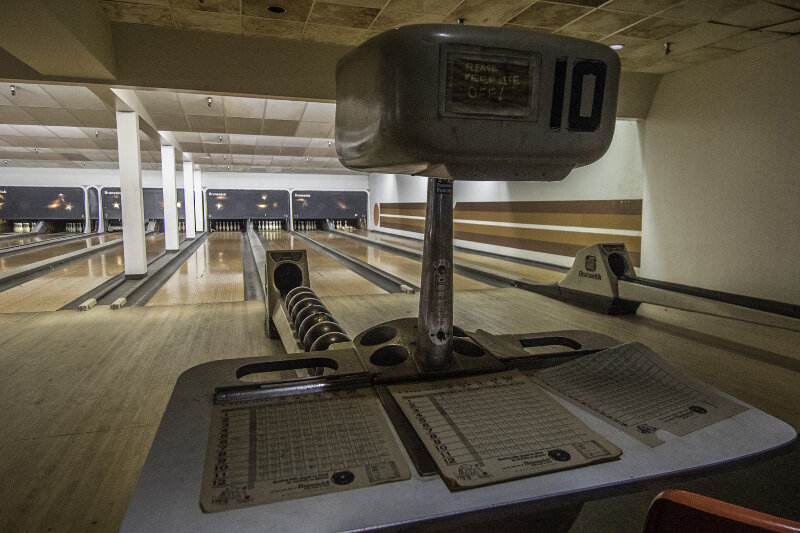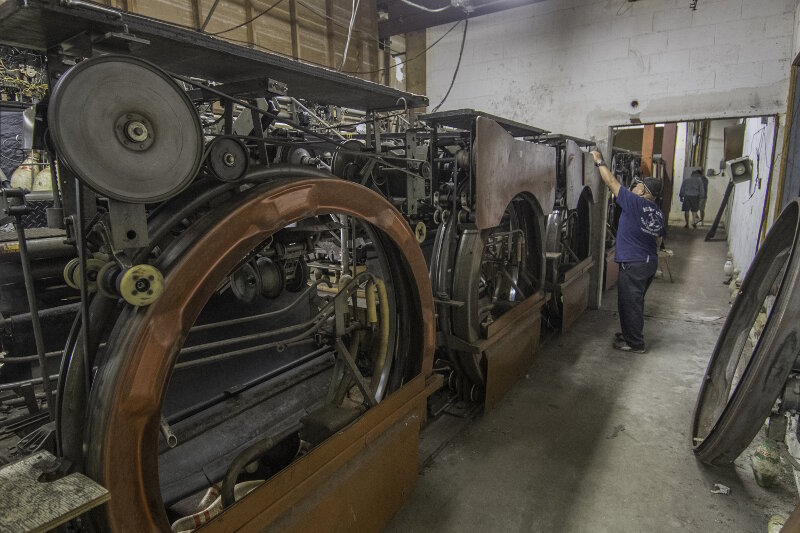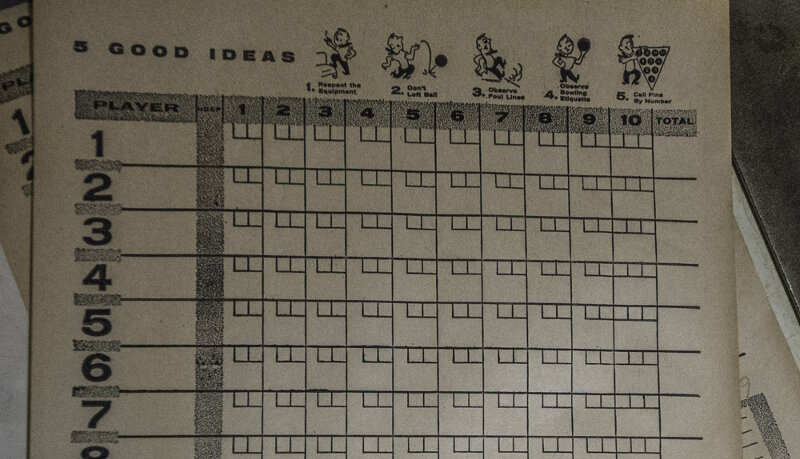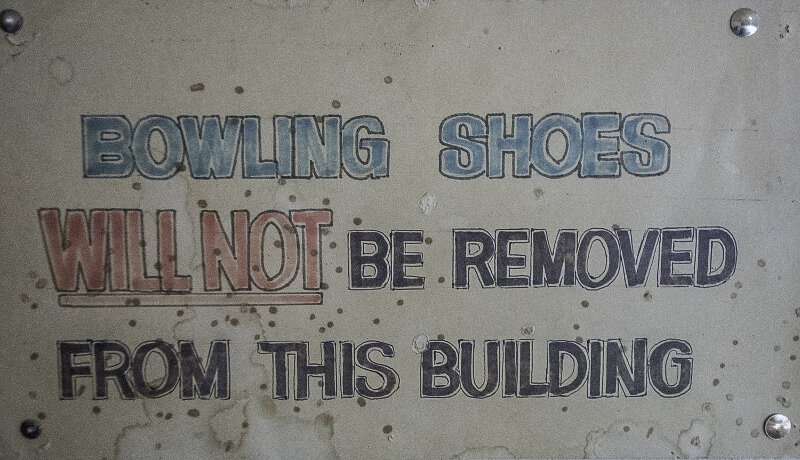
By Dave Conlin
May 16, 2017

A glimpse back in time at the Midway lanes. Image courtesy of Dave Conlin, Exploring the Sunken Heritage of Midway Atoll expedition. Download larger version (jpg, 1.0 MB).
We are here to find airplanes and invasive species, but in addition to that, our team has dropped in on a community that has been here for a long time. As a community, they have all sorts of rituals, rites, traditions, and general practices. For example, on Wednesdays, lunch is “short order cook day,” and you can ask one of the amazing Thai cooks to make you any sort of fast food you might like. I didn’t personally see it, but I did hear one of our team talking about ordering a “double-double” which I take to be a double patty, double cheese, cheese burger—certainly none of us have suffered from hunger while we have been here.

The team tries their hand at bowling after a long day on the water. Image courtesy of Dave Conlin, Exploring the Sunken Heritage of Midway Atoll expedition. Download larger version (jpg, 919 KB).
In addition to short order Wednesdays, Sundays are bowling night. If you can get at least five people together, Twan (the Thai magician who I swear keeps most of this island running and can probably fix everything from the ice cream machine to the G-3 jet that delivers people here) will show up to the Midway bowling alley and fire up the lanes for everybody’s amusement.
While the island is best known today for the millions of birds who spend their days fussing, fighting, or just patiently waiting for mom to come back with some tasty squid vomit and is best known historically for the battle against the Japanese, what we see most of is the remains of a Cold War outpost that was once on the front lines of more than 50 years of nose-to-nose confrontation between the United States and Russia.
Midway was part of the DEW line (Distant Early Warning system)—an interlinked series of radar and monitoring stations designed to give the U.S. mainland as much advance warning as possible for a surprise Russian airstrike (learn more about the DEW line – with a brief mention of Midway – here ), as well as a node for the SOSUS (Sound Surveillance System) underwater listening system that tracked Russian nuclear submarines throughout the North Pacific (learn more about SOUSUS here ).

Behind the scenes at the Midway bowling alley. Image courtesy of Dave Conlin, Exploring the Sunken Heritage of Midway Atoll expedition. Download larger version (jpg, 1.0 MB).
Those two systems and other parts of the Cold War demanded a huge functioning infrastructure to operate, and that infrastructure needed people—sailors, airmen, civilians, and quite a few people who worked for those “three letter agencies” with massive mandates and budgets, but tiny addresses. In fact, for years, more than 5,000 people lived and worked here on the island doing all sorts of stuff; all of those people needed something wholesome to do after work—hence the bowling alley.
The bowling alley, like everything else here on the island, is absolutely amazing. I counted seven lanes and more than 100 individual lockers where true die hard bowlers could lock their civilian shoes and clothes. Today, rust and dust is everywhere, but it doesn’t take much imagination to see the epic league tournament contests between the Navy’s flight mechanic team and the Air Force weather forecasters that must have added some much needed diversion to the more serious endeavors of their daily jobs.
The haze of cigarette smoke is long gone, and any beer that gets consumed in the bowling alley has to be brought there. But the drill for drilling out finger holes in new bowling balls still sits off in a side room, right next to the finger sizing jig, the special bowling ball clamp for the drill press, and about 5,000 bowling scoresheets slowly turning into moldy, musty mush. All of this was part of a community that I can only conclude was something of a cross between “Leave it to Beaver” and “Dr. Strangelove.”
Twan has somehow figured out how to get the lanes up and running, and last Sunday, he watched in amused silence as our team rolled many gutter balls interspersed with a few solid strikes. Brett, as it turns out, in addition to being a very good photographer, is also a decent bowler—who would have known? And Bob, the Refuge Manager, is somewhat of a shark when it comes to shuffleboard. Future researchers, you have been warned.

Keeping score at the Midway bowling alley. Image courtesy of Dave Conlin, Exploring the Sunken Heritage of Midway Atoll expedition. Download larger version (jpg, 1.1 MB).

A sign that provide a glimpse in to the past at Midway Atoll. Image courtesy of Dave Conlin, Exploring the Sunken Heritage of Midway Atoll expedition. Download larger version (jpg, 1.0 MB).